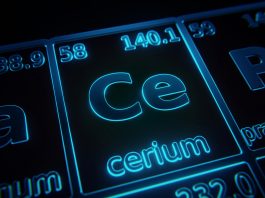A team of scientists from the Department of Energy’s Ames National Laboratory has developed a new characterisation tool that allowed them to gain unique insight into a possible alternative material for solar cells.
The team developed a microscope that uses terahertz waves to collect data on material samples. They used their microscope to explore Methylammonium Lead Iodide (MAPbI3) perovskite, a material that could potentially replace silicon in solar cells.
The results of the study, titled ‘Terahertz Nanoimaging of Perovskite Solar Cell Materials,’ was published in the journal ACS Photonics.
Unique features of the new microscope
Richard Kim, a scientist from Ames Lab, explained the two features that make the new scanning probe microscope unique. First, the microscope uses the terahertz range of electromagnetic frequencies to collect data on materials, including those for solar cells. This range is far below the visible light spectrum, falling between the infrared and microwave frequencies. Secondly, the terahertz light is shined through a sharp metallic tip that enhances the microscope’s capabilities toward nanometre length scales.
“Normally if you have a light wave, you cannot see things smaller than the wavelength of the light you’re using. For this terahertz light, the wavelength is about a millimetre, so it’s quite large,” Kim explained.
“Here, we used this sharp metallic tip with an apex that is sharpened to a 20-nanometer radius curvature, and this acts as our antenna to see things smaller than the wavelength that we were using.”
Investigating potential new solar cell materials
Using the new microscope, the team investigated a perovskite material, MAPbI3, that has recently become of interest to scientists as an alternative to silicon in solar cells. The samples of MAPbI3 were provided by the University of Toledo.
Perovskites are a special type of semiconductor that transports an electric charge when it is exposed to visible light. The main challenge to using MAPbI3 in solar cells is that it degrades easily when exposed to elements like heat and moisture.
The team expected MAPbI3 to behave like an insulator when they exposed it to the terahertz light. Since the data collected is a reading of how the light scatters when the material is exposed to the terahertz waves, they expected a consistent low-level of light-scatter throughout the material. What they found, however, was that there was a lot of variation in light scattering along the boundary between the grains.
Kim explained that conductive materials, like metals, would have a high-level of light scattering while less-conductive materials, like insulators, would not have as much.
The wide variation of light scattering detected along the grain boundaries in MAPbI3 sheds light on the material’s degradation problem.
Degradation through changes in light scatterings
Over the course of a week, the team continued to collect data on the potential solar cell material, and data collected in that time showed the degradation process through changes in the levels of light scatterings. This information can be useful for improving and manipulating the material in the future.
“We believe that the present study demonstrates a powerful microscopy tool to visualise, understand, and potentially mitigate grain boundary degradation, defect traps, and materials degradation,” Wang concluded.
“Better understanding of these issues may enable developing highly efficient perovskite-based photovoltaic devices for many years to come.”









